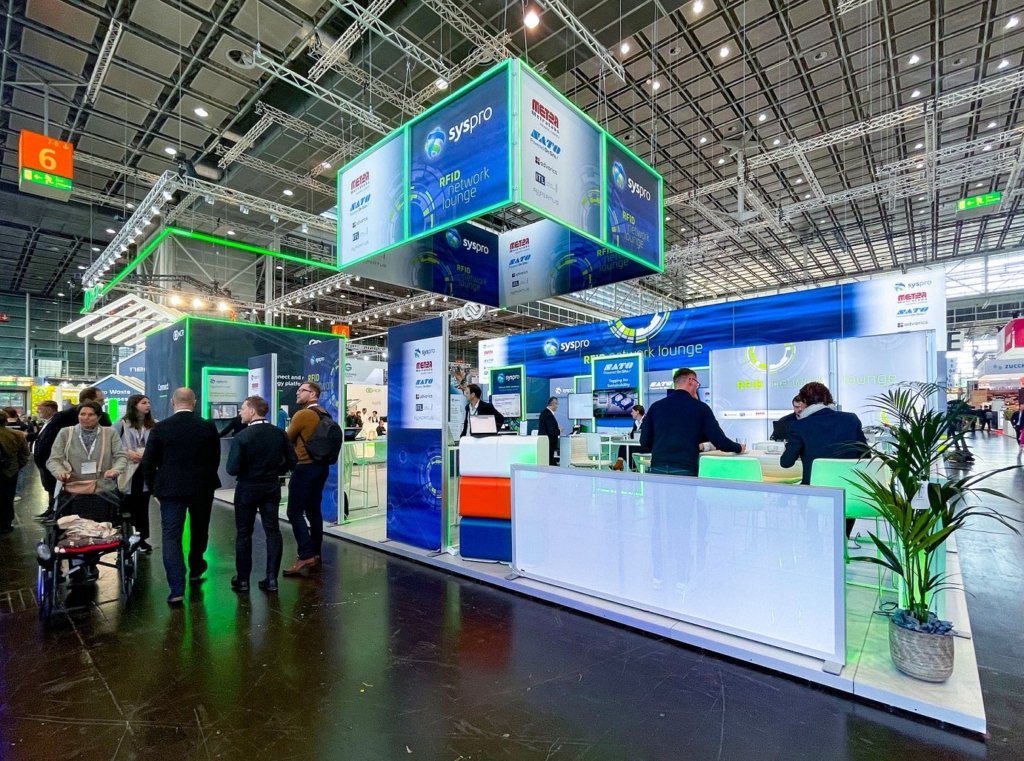Omnichannel retailing is undoubtedly the future, but implementing it successfully can be a challenge. The retail solution for omnichannel? RFID technology.
How Can Retailers Implement and Enable a Successful Omnichannel Strategy?
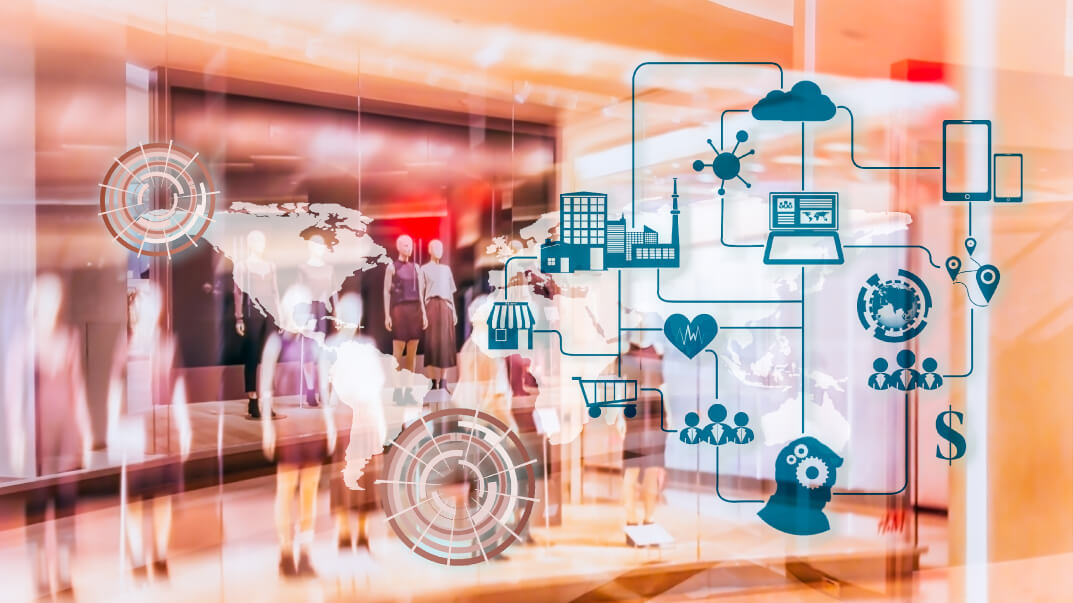
For retailers to remain competitive, it’s now imperative that they offer omnichannel services. This was undoubtedly true before the Covid-19 pandemic, but now that more consumers are looking for an alternative, digital ways to shop, it’s even more of a requirement.
According to research from McKinsey, more than one-third of consumers in America have turned to omnichannel services as a result of the pandemic. This includes services such as pick-up-from-store, return-to-store, and shopping on apps. The vast majority of these consumers will continue to take advantage of omnichannel services long after the pandemic has ceased to have an impact on retail.
However, an omnichannel strategy can be a challenge to get right. Though digital experiences are important – especially for younger consumers in the Generation Z and millennial categories – retailers shouldn’t discount the value of physical stores. A successful omnichannel strategy offers a seamless blend of both physical and digital experiences, giving customers the freedom to shop where and how they want to.

Technology is key to implementing an omnichannel strategy. Without analytical insights, it can be difficult to see where you should be diverting your energy. Though omnichannel trends, in general, apply to all retailers, you may have a unique experience with your customers meaning a different strategy is needed. Consequently, data is the only way to make informed decisions for your brand.
Tapping into digital transformation trends also makes it easier to build a unified experience for your customers. 64% of Generation Z consumers say they would switch to a competitor after multiple negative experiences with a brand. With more frequent touchpoints in omnichannel retailing, that means the probability of one of those channels disappointing customers is also higher.
Yet, today, 22% of retailers admit that they don’t have the right technology to implement omnichannel. A similar percentage of retailers say that they would benefit from more omnichannel technology. But what technology can provide this retail solution?
To be part of the digital transformation in retail, companies can turn to RFID. While businesses may already be aware of the power of RFID to support supply chain operations, they may not be as aware of RFID for omnichannel. As well as offering retailers a more accurate look at their stock, when used for omnichannel, RFID technology can also help unlock additional digital experiences for customers, so you can continue to offer consumers more innovative ways to buy.
Omnichannel Retailing Today
While the term ‘omnichannel’ has been around since 2010, it’s only gained traction as a trend over the last few years. This correlates with the growth of the Generation Z market and an increased reliance on digital services throughout the pandemic and beyond – the ‘digital transformation.’ While many retailers are aware that they should be offering omnichannel services, few implement a seamless and successful strategy.
One common misconception about omnichannel retailing is that it means a reliance on digital services. It’s certainly true that many omnichannel services focus on online shopping: apps, virtual try-on rooms, automated returns. However, this doesn’t mean the death of the physical store. Today, 88% of Gen Z consumers say they expect to connect with a brand on both physical and digital channels.
What omnichannel really means is a focus on ‘phygital’: physical and digital at the same time. And while consumers are certainly prioritising online services, many people still enjoy visiting physical retail locations. Over 50% of retail sales still happen in-store. Additionally, one survey revealed that up to 50% of customers would prefer to shop online from a brand that also operates physical stores.
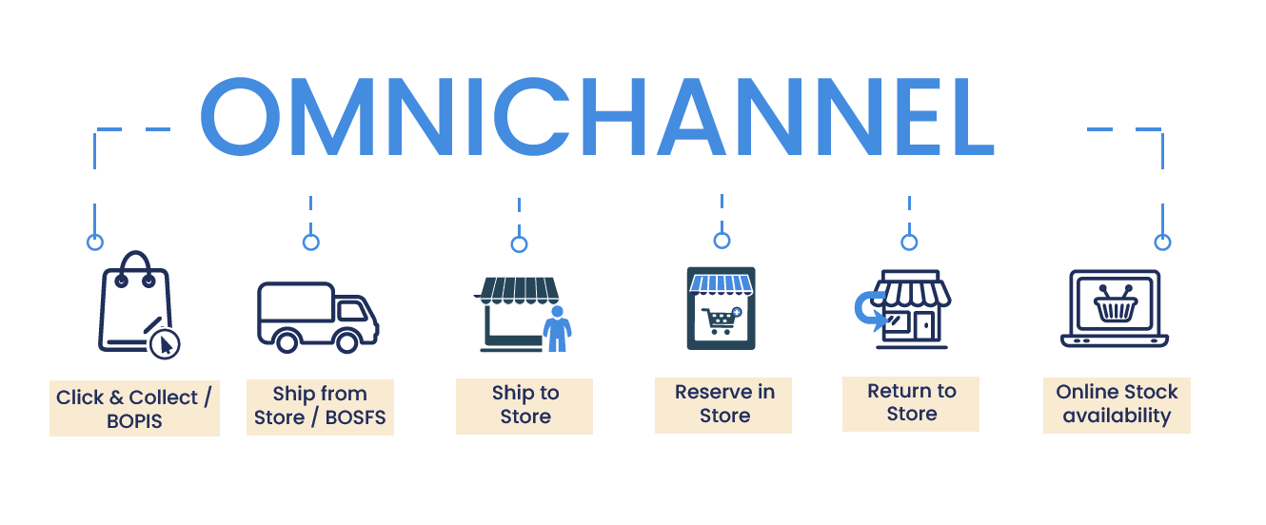
In essence, omnichannel retailing means creating a seamless experience across the online and physical parts of your brand. Omnichannel services will allow your customers to browse for items on an app, check they’re in stock in-store, visit a store to try on or sample, and then return home to purchase. Every channel should be seamlessly connected, so customers never have to restart their purchasing journey when they switch to a different channel.
Another part of omnichannel retaining that is often underappreciated is brand consistency, which we explored in a recent article. Yes, retailers must ensure a seamless experience across touchpoints. But they should also ensure that their brand identity is unified across digital and physical channels. Businesses that prioritise brand consistency actually perform better than brands that have a more lukewarm approach to their branding.
So, a successful omnichannel retail solution should integrate all channels seamlessly while prioritising a consistent experience for customers. But why should omnichannel be a priority for retailers?
Why Should Retailers be Prioritising Omnichannel?
Retailers that implement omnichannel experiences see immediate benefits. Brands with a seamless omnichannel strategy report are three times more likely to increase their revenue, and four times more likely to have loyal customers. But why?
For starters, customers today are no longer shopping on just one channel. Research from McKinsey shows that the average customer engages with three to five channels before making their purchase. Similarly, 67% of customers use multiple channels to complete a transaction. These might include social media, an online store, an app, or a physical location. Omnichannel retailing taps into the digital transformation trend by offering customers exactly what they want: the ability to shop seamlessly online and offline at the same time.
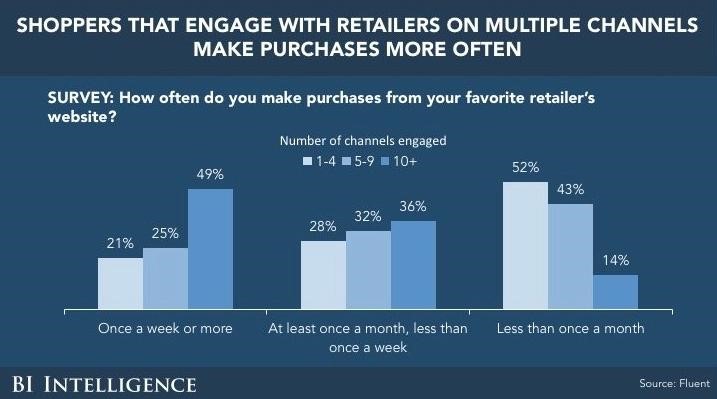
Customers who prioritise a multi-channel buying experience are also far more likely to part with their money than single-channel customers. Omnichannel customers spend about 10% more online than those who only tend to browse through one channel. Additionally, these customers are more likely to stay loyal to brands. Brands that implement a successful omnichannel strategy retain 89% of their customers – compared to 33% for retailers with a weaker omnichannel strategy.
It’s clear, then, that customers want omnichannel services, and are prepared to spend more and stay with their chosen brand if these services are available. Retailers who neglect omnichannel are also much more likely to see a dip in revenue. Strikingly, 40% of consumers will actually choose a competitor if they can’t use their preferred channel for browsing or purchasing.
The Companies Getting Omnichannel Right
We’ve already examined the benefits of omnichannel retailing. But which retailers are getting it right?
Affordable luxury retailer BA&SH proved that the future is ‘phygital’ when they pressed ahead with a range of new store openings in the US and Asia. In 2018, they opened seven new physical locations in Mainland China and three in Hong Kong, all of which achieved profitability after just three months. To support their sales in Asia, they also launched the brand on Tmall at the same time, supporting e-commerce in the region.
It’s a similar story with Adidas, but on a larger scale. They have 2,500 retail stores across the globe, combined with a large e-commerce channel, including an app. The app reaches 30 countries in their market and offers unique omnichannel services including order tracking, personalised content, and in-app chat. Despite e-commerce being the channel they expect to grow most rapidly, Adidas still invests heavily in in-store experiences. For example, they launched flagship digital stores in London and Paris in 2019.
A brand hoping to compete with Adidas is Lululemon. They operated around 489 stores in Q1 of 2020, but grew this to 521 by the end of the year, despite pandemic losses in brick-and-mortar store footfall. This investment allowed Lululemon to capitalise on the pandemic growth in services such as store pickup and appointment shopping. Overall, the company generated a 47% increase in international business in Q4 of 2020, with e-commerce representing 52% of its total revenue.
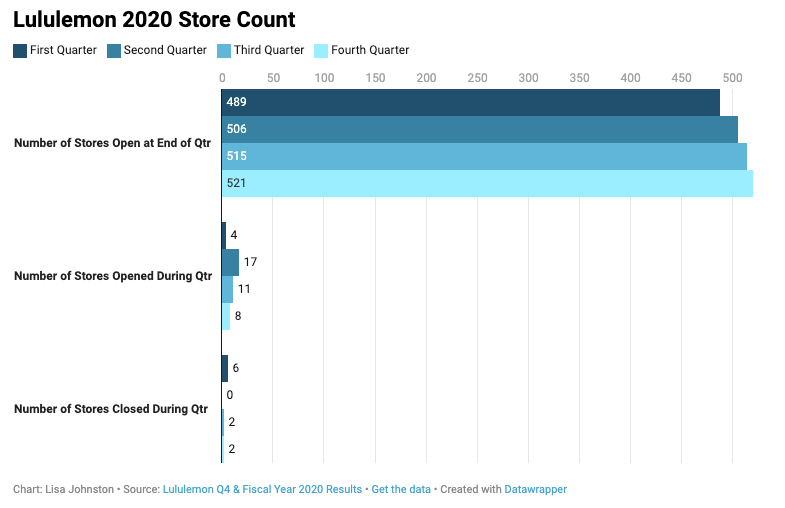
As demonstrated by these thriving retailers, a successful omnichannel strategy is seamless, unified, and flexible. Each of these retailers was able to adapt to changes in physical footfall and the growth in e-commerce while growing their brands globally. To do this, they have tapped into digital transformation trends, including digital stores, online try-on, and diverse purchase and delivery options. In the case of Lululemon and Adidas, RFID for omnichannel also played a role in their success.
The Benefits of RFID for Omnichannel
As we’ve seen, the retailers who do hit upon omnichannel success embrace digital services without neglecting brick-and-mortar stores. The foundation of a winning omnichannel strategy is seamless integration, harnessing data, and fully optimised operations. By implementing RFID for omnichannel, retailers can hit each one of these factors for success.
We know that retailers are adopting RFID technology at a faster rate because of Covid-19. In fact, 46% of retailers say that it is a priority for them in responding to the pandemic. But well before the pandemic, retailers were realising that RFID could offer use cases for omnichannel and that it can add a huge amount of value to operations. This is especially true when retailers adopt RFID for multiple omnichannel services.
Retailers who use RFID alongside five or more omnichannel experiences see a 20% higher ROI than retailers who adopt RFID for less than four omnichannel services. When implemented, RFID can offer the real-time insights and accuracy necessary for retailers to scale up their omnichannel services.
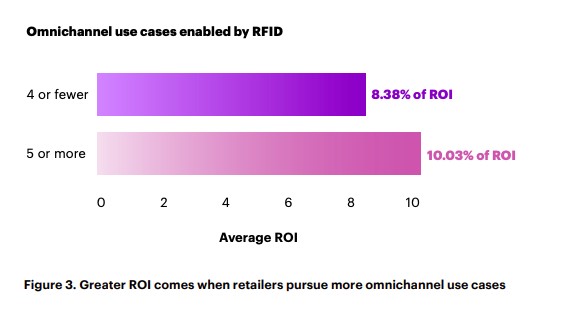
Typical store inventory accuracy at item level is around 60%-80%. Unfortunately, much higher accuracy is needed if retailers want to enable multiple omnichannel experiences. Without real-time data, it can be challenging to know where stock is, and you’ll struggle to integrate omnichannel services like pick-up-from-store, app purchases, or shipping from a distribution centre.
RFID tags on stock can bring item-level stock accuracy levels to 99%. This means retailers have an exact view of where all their stock is, whether that’s in a warehouse or store. As a result, customers are able to know their chosen products are in stock at their chosen location and can opt for the method of delivery that suits them – whether that’s shipping to a store, collecting from a pick-up point, or delivery to home.
But there are more benefits for customers when retailers implement RFID for omnichannel. Tagging products allows customers to track purchases through their shipping journeys, meaning they can get more accurate delivery dates. This is often crucial if they have chosen to pick them up from a store, as they will know exactly when their items have arrived.
Overall, when implemented for omnichannel, RFID grants retailers valuable visibility into their supply chains and stock. With RFID, retailers can focus on creating new and innovative omnichannel services, with the knowledge that they will be able to create a seamless experience across channels.
Implementing RFID for Omnichannel Retailing
According to research from Coresight, 74% of retailers have already started implementing an omnichannel retail strategy. However, this doesn’t mean that these strategies are always successful. Just 34% of companies have a mature omnichannel strategy. Though many retailers will try omnichannel, there’s a big difference between creating a strategy and seeing it through to success.
As we’ve discovered, implementing RFID for omnichannel retail operations can make a huge difference to the success of omnichannel services. The real-time data created by RFID technology can help retailers to plan their omnichannel strategy, focusing on the channels that will bring the most value to their operations. Having a focused omnichannel strategy is vital for retailers that are just starting to experiment with alternative services, and using RFID for omnichannel implementation can help businesses create and implement a successful strategy.
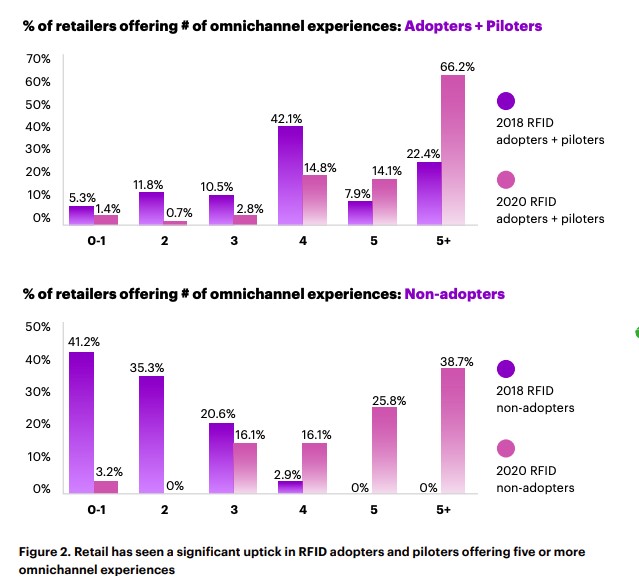
Today, 28% of hardline retailers intend to use RFID to support their omnichannel fulfilment options. As RFID technology becomes more accessible – the cost of an RFID tag has already dropped considerably over the last 20 years – this number is set to increase. Omnichannel is an essential part of retail; to implement it successfully, RFID is the obvious retail solution.
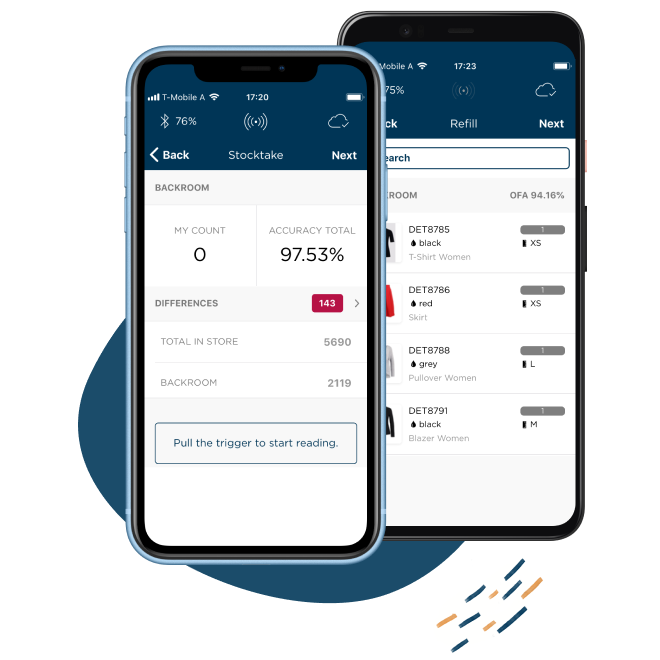
An RFID retail solution
Stock accuracy, on-floor availability, and RFID omnichannel applications in stores.
Book a demo with RFID to find out how our cloud-hosted RFID solution could help you improve your omnichannel strategy. Our multi-user app can provide intelligent stock takes and a smart in-store replenishment process, while utilising RFID for omnichannel services can help you effectively manage your entire store and eCommerce operations with real-time, item-level inventory visibility and analytics.

